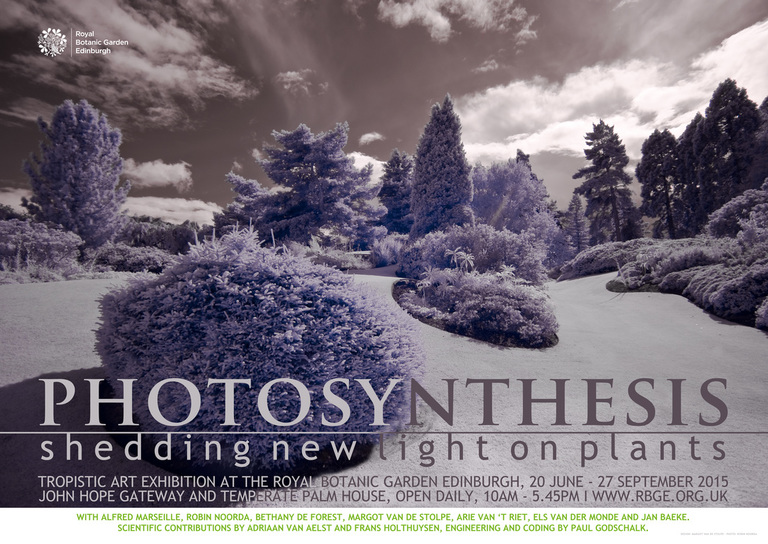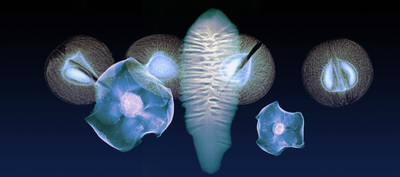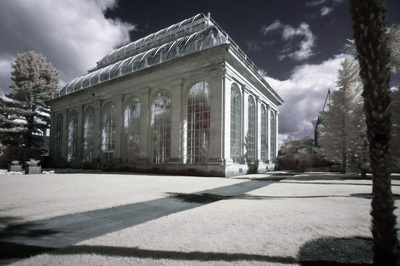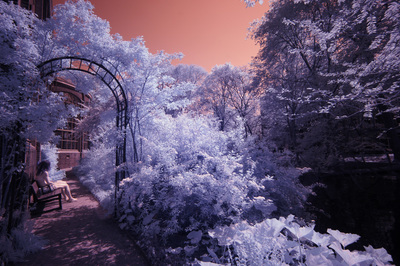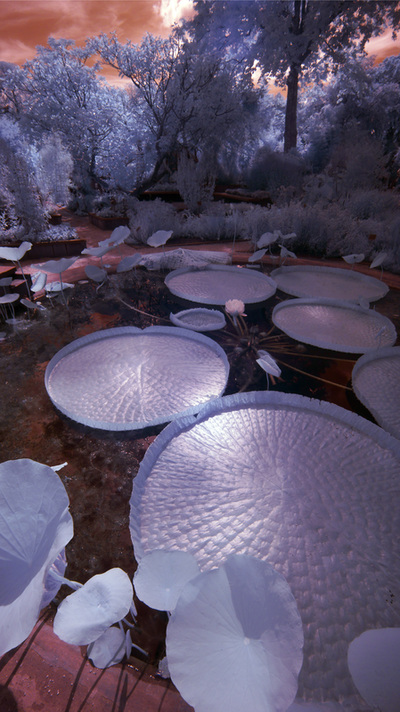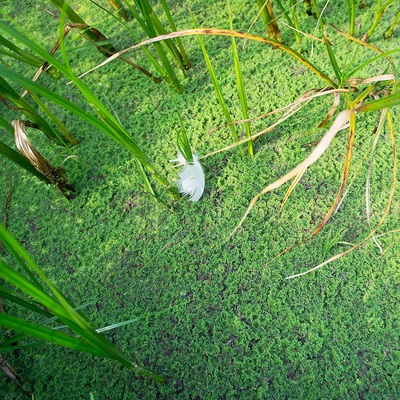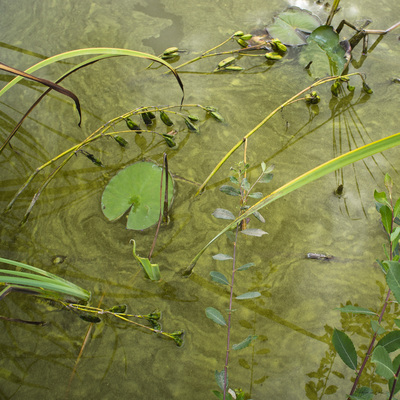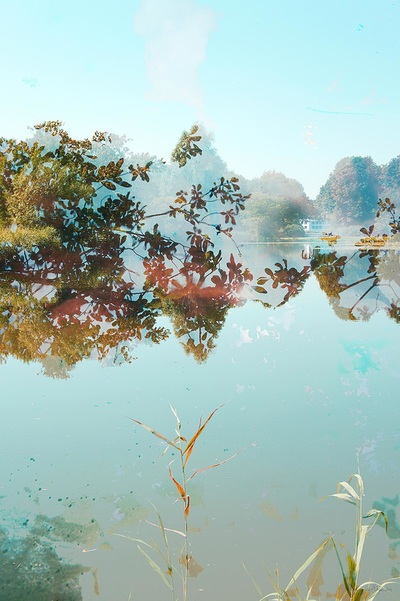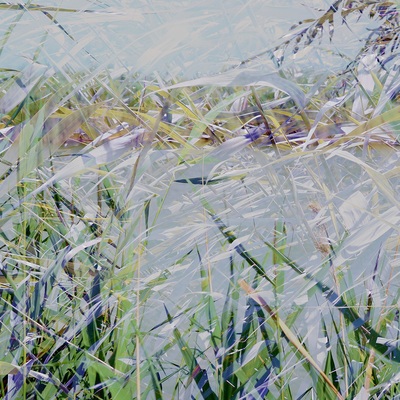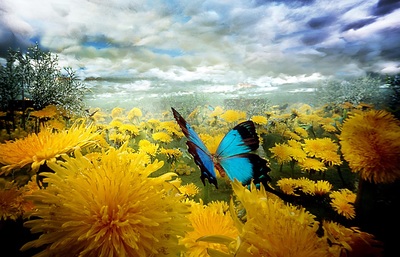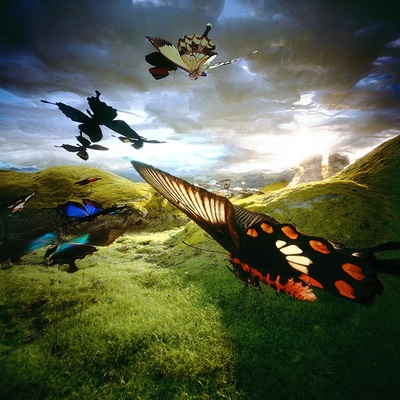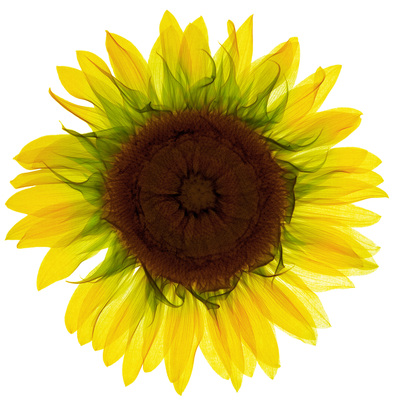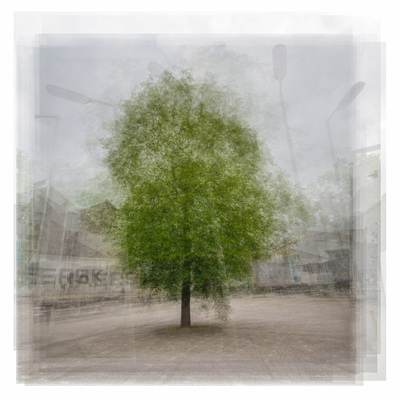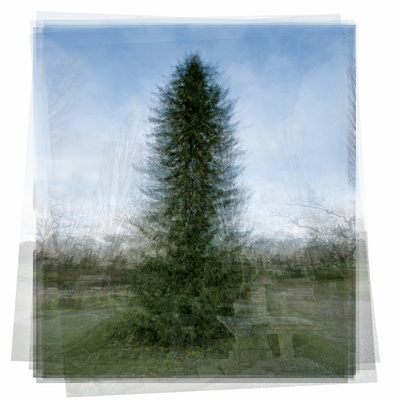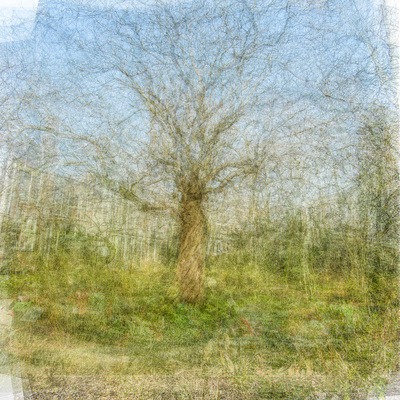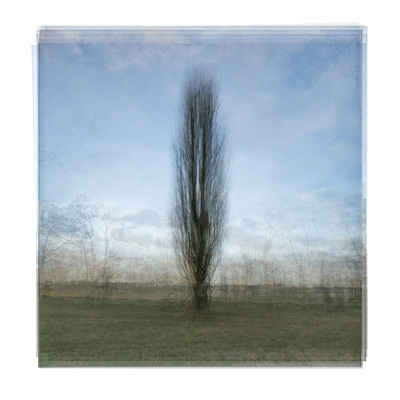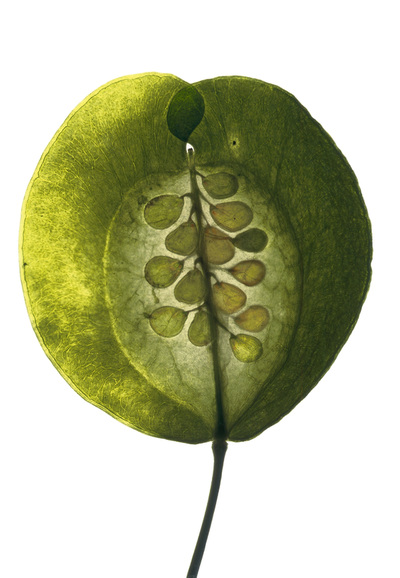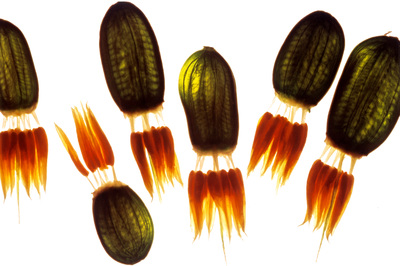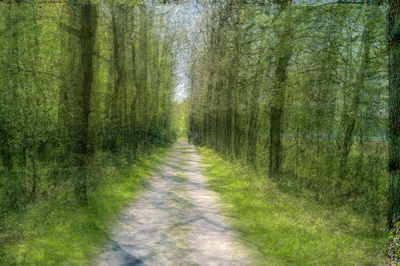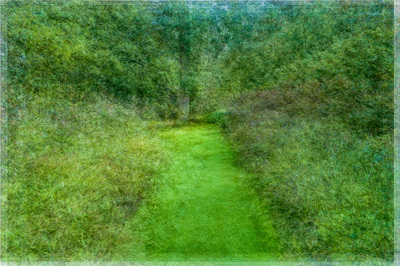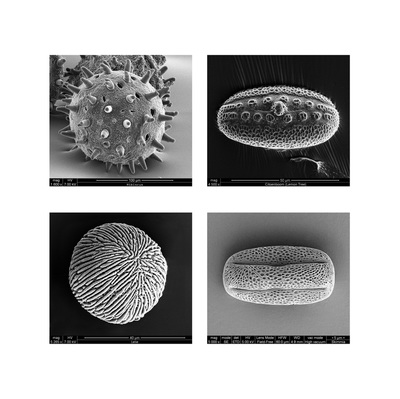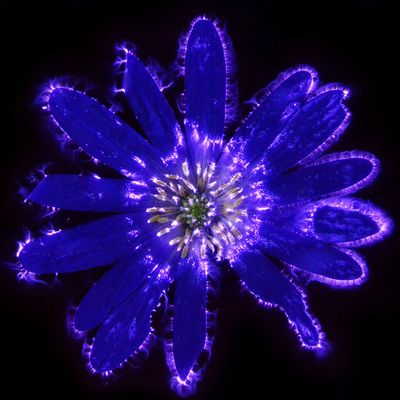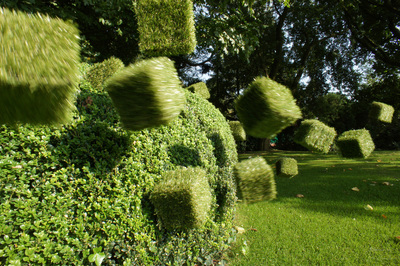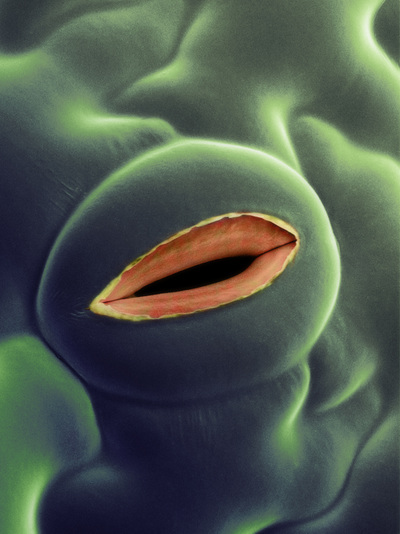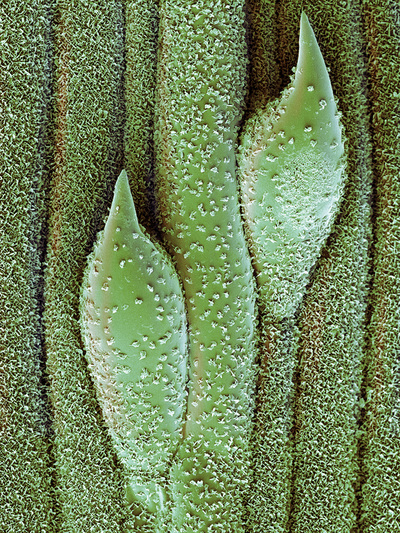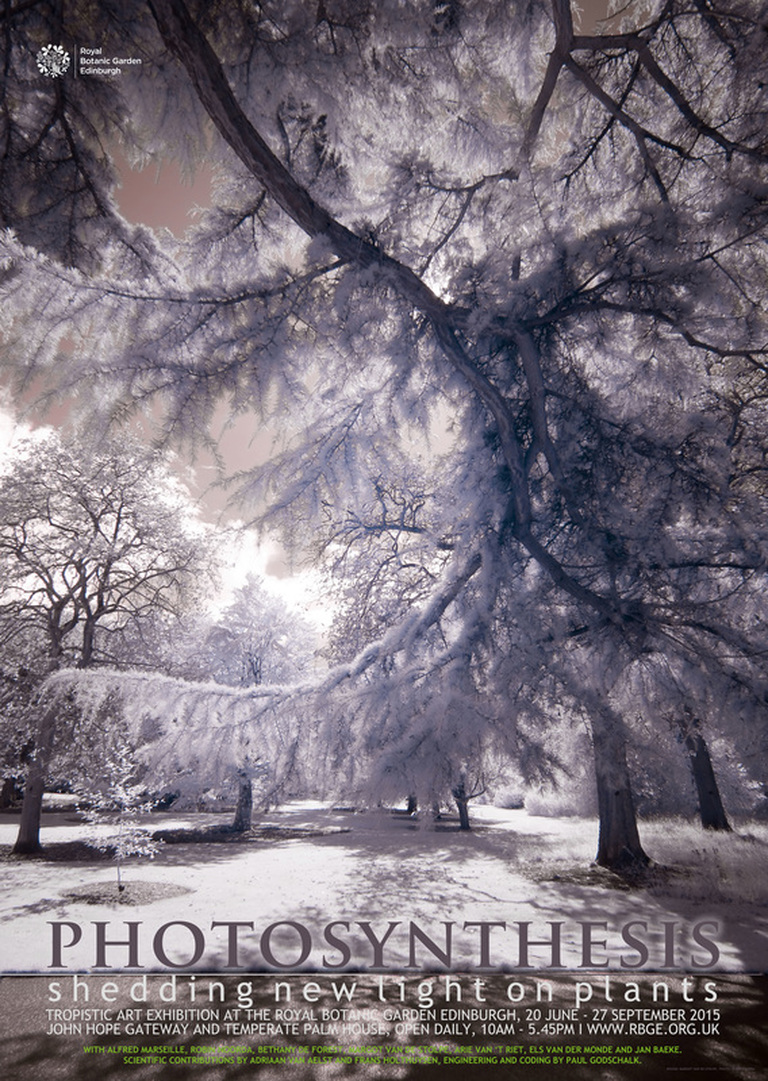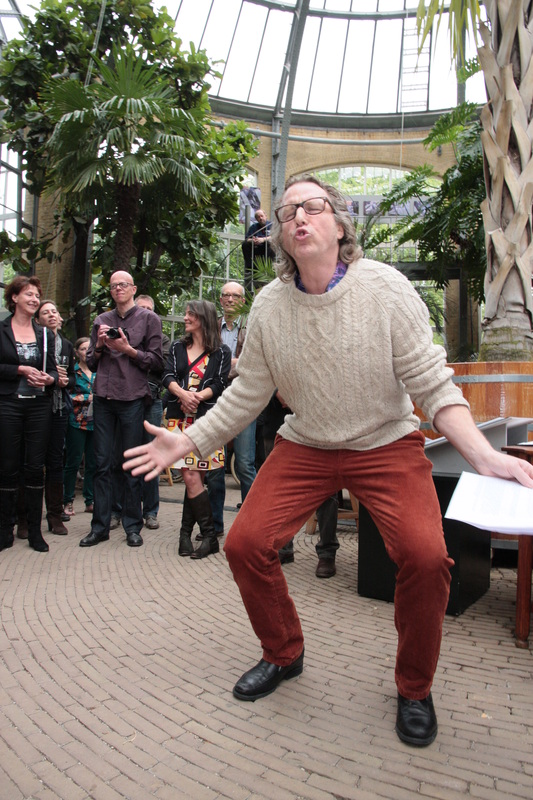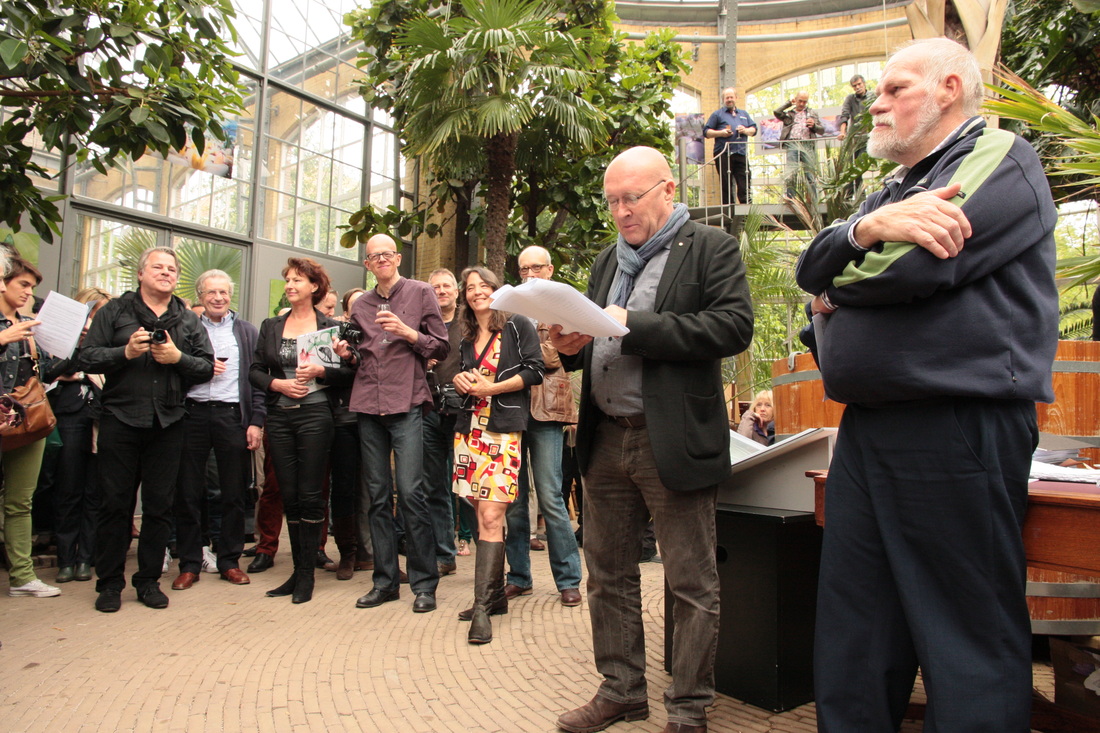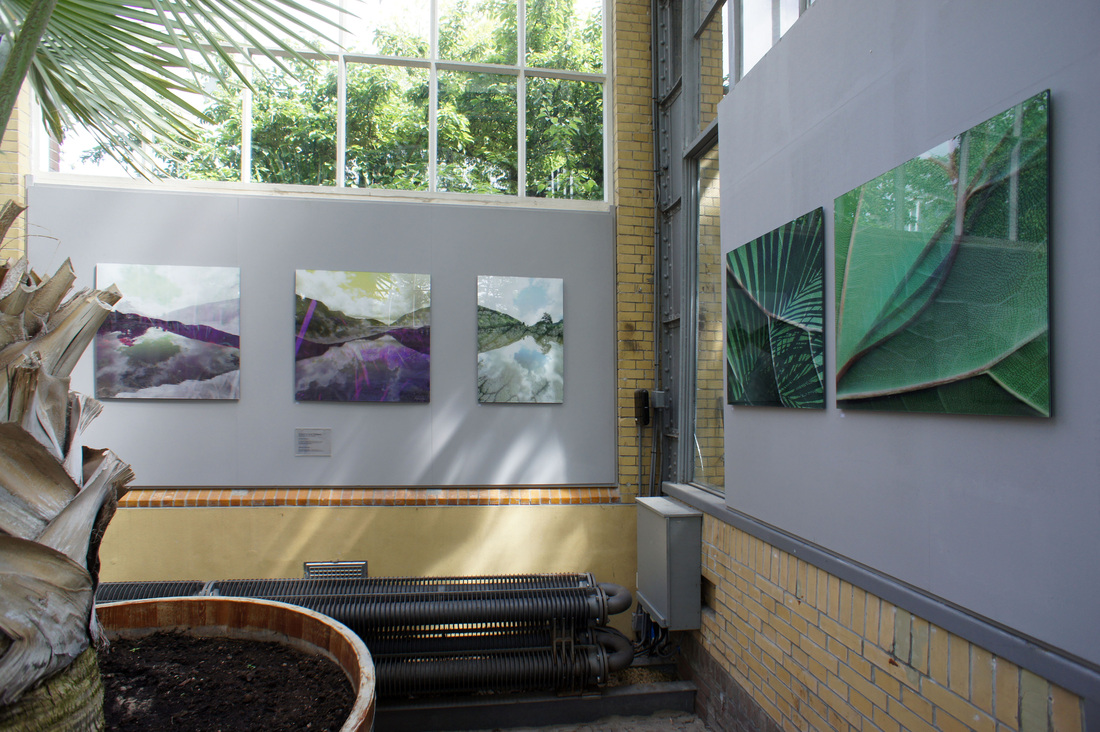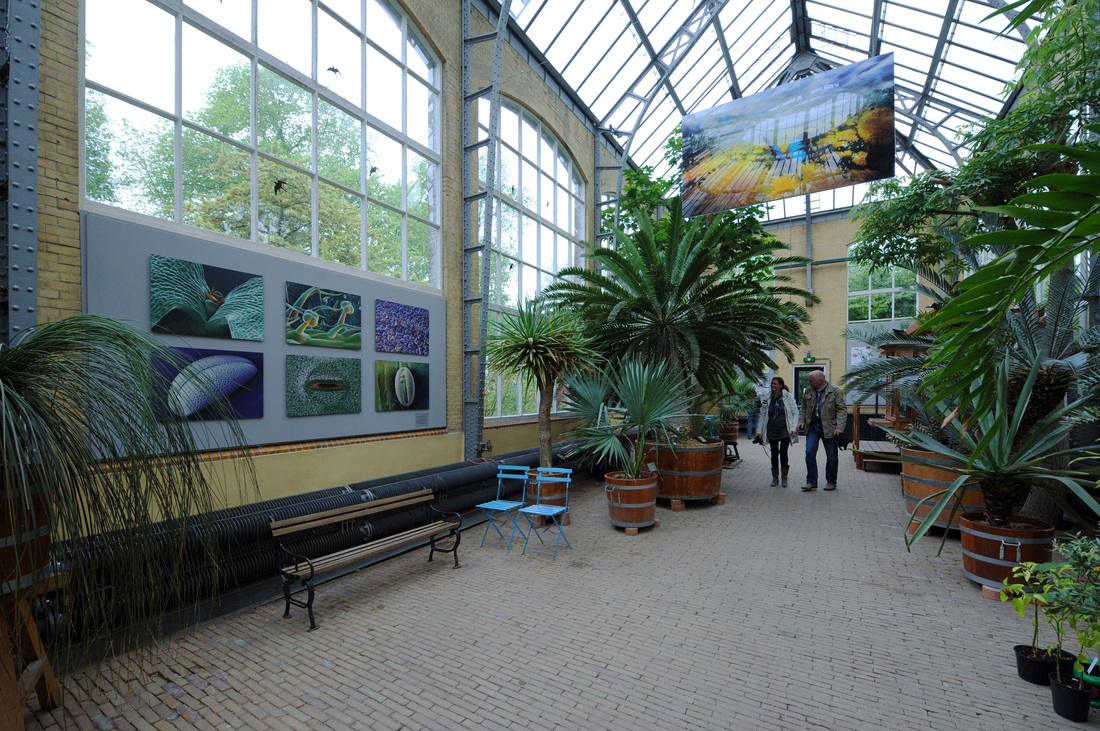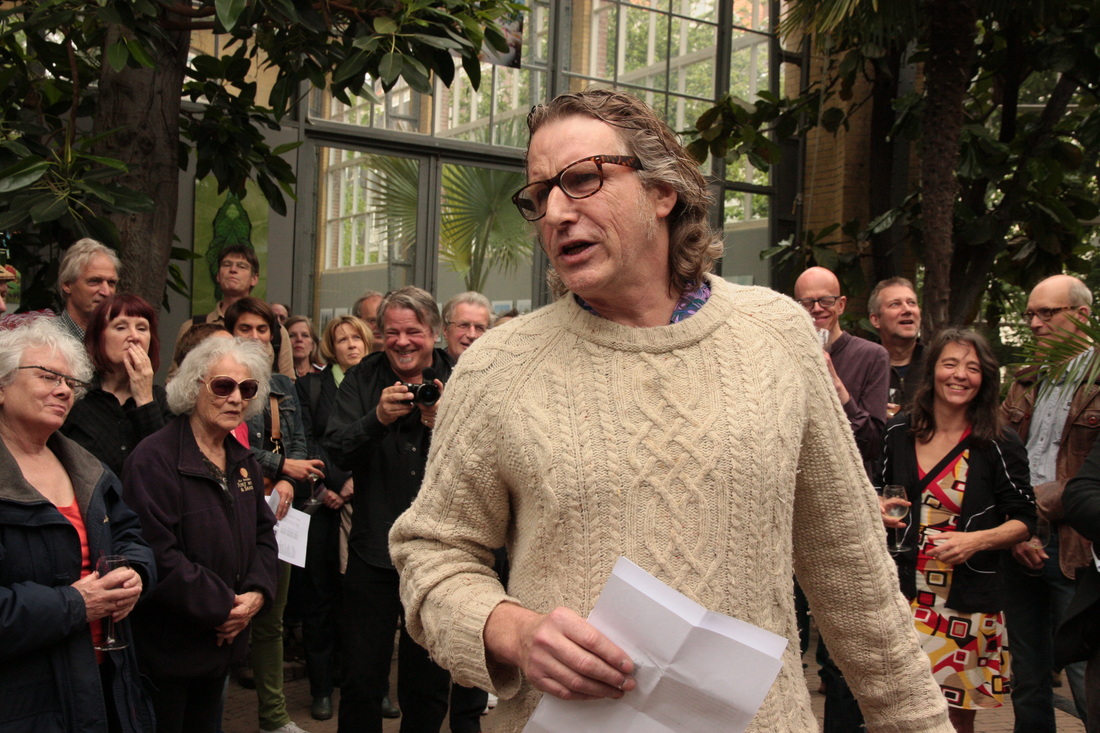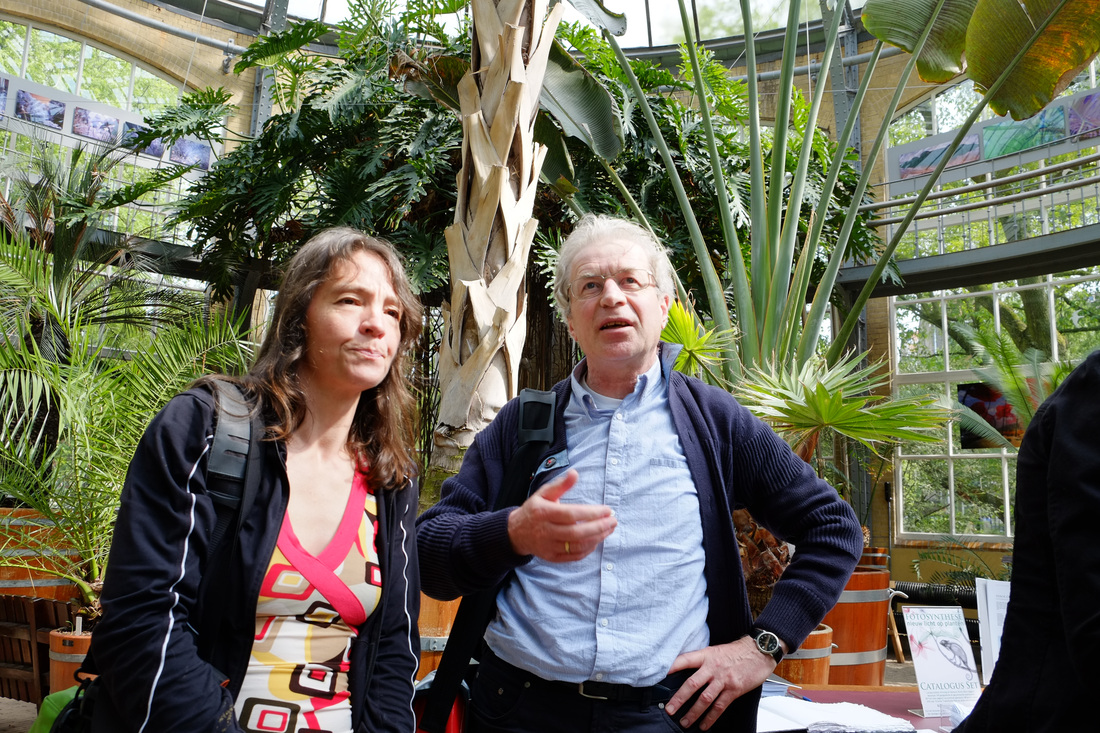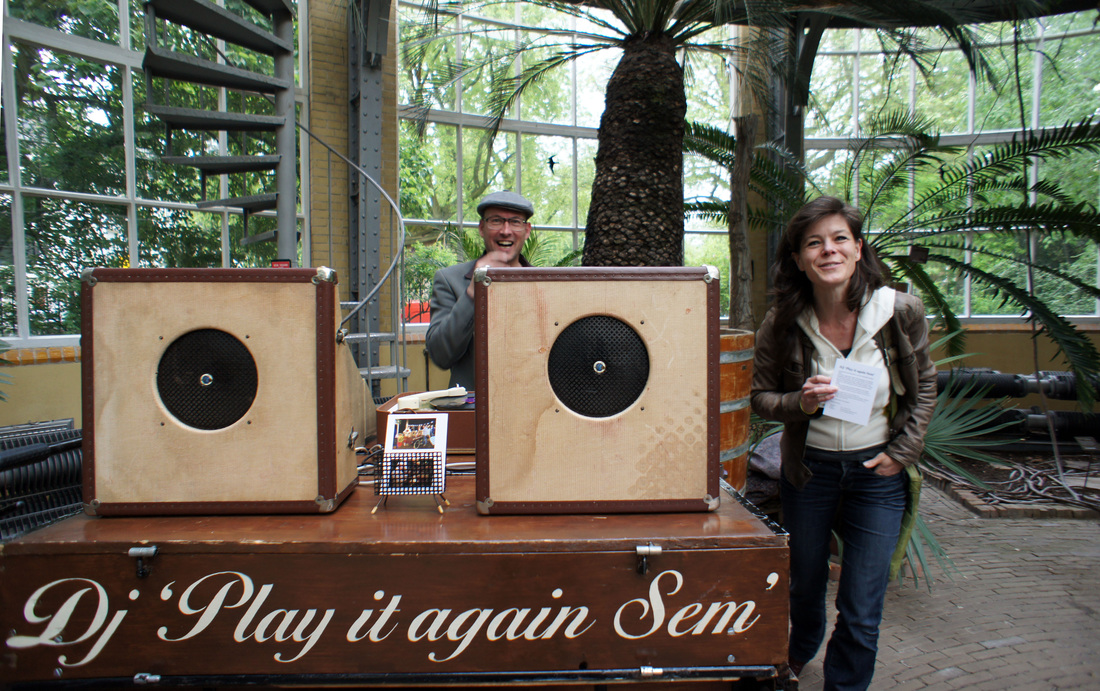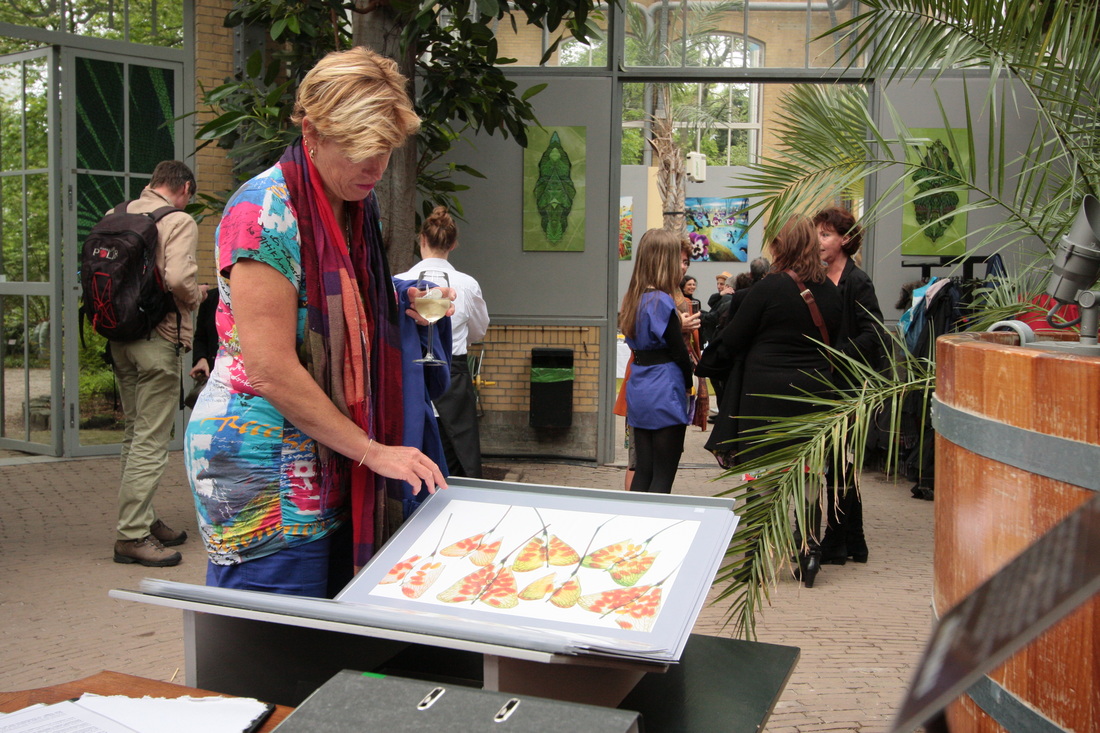Exhibitions for Botanic Gardens
I created and curated: Photosynthesis - Shedding new light on plants
An art exhibition for botanic gardens. The first venue was the Hortus Botanicus Amsterdam with a summer exhibition in the Palm Greenhouse of three and a half months in 2013.
The Royal Botanic Garden Edinburg was in 2015 the most recent venue to have had this traveling exhibition. This over three months exhibition was co-curated by Tropism co-founder Alfred Marseille. The exhibition attracted over 200.000 visitors.
The Royal Botanic Gardens of Sydney might become the next venue.
The world of plants as we have never seen it before. That is the essence
of this exhibition. Artists belonging to art movement Tropism have been
photographing the world of plants, using unusual, often scientific,
visualisation techniques. The use of infrared, x-ray, pinhole and electron
microscopy give the images a surrealistic and magical touch. The results
are unique artistic visualisations that offer a surprising and spectacularly
different view of plants.
Tropism
The dictionary definition of tropism is: ‘the ability of an organism to direct itself towards a stimulus’. The most common example of tropism is a plant growing in the direction of light. As an art movement Tropism wants to heighten people’s perceptions by making use of certain stimuli. The artists of the Tropism Art & Science Foundation want to capture the world around them in a way that both engages and surprises the spectator.
Tropism wants to move, mobilise and lead the spectator towards participation in, and interaction with the perception that is being presented. Particularly those elements that appear at the edge of perception are the main ingredients of Tropism. The Tropists feel a great affinity with the plant world and all of their works are related to plants, botanical gardens or flora, in every way imaginable.
Presentation concept
The exhibition includes about fifteen series or perceptions and ten movies, each realized in a special visualization technique. The majority is made especially for this occasion. Each series has a Latin name that typefaces the perception. The series 'Trans Planta' shows the plant world in x-ray and 'Camera Obscura' uses 'pinhole' technique, etc.
Mission
Sustainability and awareness are areas of interest and are involved in most of the Tropistic works although we do not emphasise this. It is a message well wrapped to be revealed and experienced as a personal discovery and thus hopefully persist better in the mind of the spectator.
One can order the Royal Botanic Gardens Edinburg catalogue by e-mailing: tropism(at)morphosis.nl
The 'Photosynthesis Art Exhibition' catalogue app.
For those who went and those who couldn't come.
Only € 2,99. For OSX click here, for Android click here
The catalogue app contains a much larger collection as the exhibition itself or the printed catalogue. A stunning 150+ works of art and all the 10 movies including the award winning Red-end animation! are incorporated.
Inquirers about the traveling exhibition: robin.noorda(at)gmail.com
More on Photosynthesis and Tropism, go to www.tropism.eu
Below a small selection of the 122 works of the Photosynthesis exhibition by the Tropists: myself (starting at row 1), Margot van de Stolpe (row 4 #5), Bethany de Forest (row 6), Arie van 't riet (row 7), Alfred Marseille (row 8 & 11), Els van de Monde (row 9 #4), Frans Holthuysen (row 12) en Adriaan van Aelst (row 15).
I created and curated: Photosynthesis - Shedding new light on plants
An art exhibition for botanic gardens. The first venue was the Hortus Botanicus Amsterdam with a summer exhibition in the Palm Greenhouse of three and a half months in 2013.
The Royal Botanic Garden Edinburg was in 2015 the most recent venue to have had this traveling exhibition. This over three months exhibition was co-curated by Tropism co-founder Alfred Marseille. The exhibition attracted over 200.000 visitors.
The Royal Botanic Gardens of Sydney might become the next venue.
The world of plants as we have never seen it before. That is the essence
of this exhibition. Artists belonging to art movement Tropism have been
photographing the world of plants, using unusual, often scientific,
visualisation techniques. The use of infrared, x-ray, pinhole and electron
microscopy give the images a surrealistic and magical touch. The results
are unique artistic visualisations that offer a surprising and spectacularly
different view of plants.
Tropism
The dictionary definition of tropism is: ‘the ability of an organism to direct itself towards a stimulus’. The most common example of tropism is a plant growing in the direction of light. As an art movement Tropism wants to heighten people’s perceptions by making use of certain stimuli. The artists of the Tropism Art & Science Foundation want to capture the world around them in a way that both engages and surprises the spectator.
Tropism wants to move, mobilise and lead the spectator towards participation in, and interaction with the perception that is being presented. Particularly those elements that appear at the edge of perception are the main ingredients of Tropism. The Tropists feel a great affinity with the plant world and all of their works are related to plants, botanical gardens or flora, in every way imaginable.
Presentation concept
The exhibition includes about fifteen series or perceptions and ten movies, each realized in a special visualization technique. The majority is made especially for this occasion. Each series has a Latin name that typefaces the perception. The series 'Trans Planta' shows the plant world in x-ray and 'Camera Obscura' uses 'pinhole' technique, etc.
Mission
Sustainability and awareness are areas of interest and are involved in most of the Tropistic works although we do not emphasise this. It is a message well wrapped to be revealed and experienced as a personal discovery and thus hopefully persist better in the mind of the spectator.
One can order the Royal Botanic Gardens Edinburg catalogue by e-mailing: tropism(at)morphosis.nl
The 'Photosynthesis Art Exhibition' catalogue app.
For those who went and those who couldn't come.
Only € 2,99. For OSX click here, for Android click here
The catalogue app contains a much larger collection as the exhibition itself or the printed catalogue. A stunning 150+ works of art and all the 10 movies including the award winning Red-end animation! are incorporated.
Inquirers about the traveling exhibition: robin.noorda(at)gmail.com
More on Photosynthesis and Tropism, go to www.tropism.eu
Below a small selection of the 122 works of the Photosynthesis exhibition by the Tropists: myself (starting at row 1), Margot van de Stolpe (row 4 #5), Bethany de Forest (row 6), Arie van 't riet (row 7), Alfred Marseille (row 8 & 11), Els van de Monde (row 9 #4), Frans Holthuysen (row 12) en Adriaan van Aelst (row 15).
Early 20th century film on tropism by Dr. A.E. Navaz, Harvard University.
It is part of the film collection of the traveling Photosynthesis exhibition of the Tropism Art and Science Collective.
It is part of the film collection of the traveling Photosynthesis exhibition of the Tropism Art and Science Collective.
Flora Magica,
A visitor of a botanic garden falls asleep on a bench. After closing time she wakes up. The woman gradually changes in colour and texture until she, camouflaged as a forest nymph, is completely assimilated by the greenery, and is only visible when she moves. It is also part of the film collection.
A visitor of a botanic garden falls asleep on a bench. After closing time she wakes up. The woman gradually changes in colour and texture until she, camouflaged as a forest nymph, is completely assimilated by the greenery, and is only visible when she moves. It is also part of the film collection.
Flora Sonora, or the singing plant, or rather the whining, squealing shrub is an art-awareness installation.
Small current variations, caused by interaction as touching the plant, are being sensed and amplified by an E.E.G. module which controls a modular synthesizer. So the sound itself is designed, but the variations of the sound are caused by the interactions with the plant. The plant reacts to touch and you can hear its response.
Almost 30 years ago (1987 Bussum, 'de Vonk') this installation was first shown in the very first Tropism exhibition by means of the same Synton 3000 modular synthesizer that is a very rare vintage collectors item by now (it is the actual prototype demo model housing of Felix Visser with modules of my choice).
It is also part of the film collection.
Small current variations, caused by interaction as touching the plant, are being sensed and amplified by an E.E.G. module which controls a modular synthesizer. So the sound itself is designed, but the variations of the sound are caused by the interactions with the plant. The plant reacts to touch and you can hear its response.
Almost 30 years ago (1987 Bussum, 'de Vonk') this installation was first shown in the very first Tropism exhibition by means of the same Synton 3000 modular synthesizer that is a very rare vintage collectors item by now (it is the actual prototype demo model housing of Felix Visser with modules of my choice).
It is also part of the film collection.
Insecta Spectra - Simulated Butterfly and Bee vision
The way insects see the colorful world of flowers differs from our perception.
The human vision is based on the colors red, green, and blue.
Insects however, can also see in the ultraviolet (UV) part of the spectrum.
Plants make use of this phenomena by advertising secret messages to those who can see in UV.
These can be messages of how to spot the nectar, where the pollen is, or landing strips on how to approach the flower.
And so, during millions of years, a mutual beneficial relationship evolved: honey for being pollinated.
As UV rays travel hardly through glass, and as lenses are made of glass, taking pictures in the UV spectrum is quite remarkable.
Dr. Klaus Schmitt from Weinheim, Germany, made these stunning UV pictures, simulating the perception of colors by insects with a very rare 105mm Nikkor UV lens. If I understand correctly, only 11 where built for scientific purposes for NASA with a very special glass alloy of quartz/fluorite. One such lens costs a fortune equal to a high class Italian sport car.
I made this film in collaboration with Dr. Klaus Schmitt for the 'Photosynthesis' botanic art exhibition of the Tropism Art and Science Collective.
The way insects see the colorful world of flowers differs from our perception.
The human vision is based on the colors red, green, and blue.
Insects however, can also see in the ultraviolet (UV) part of the spectrum.
Plants make use of this phenomena by advertising secret messages to those who can see in UV.
These can be messages of how to spot the nectar, where the pollen is, or landing strips on how to approach the flower.
And so, during millions of years, a mutual beneficial relationship evolved: honey for being pollinated.
As UV rays travel hardly through glass, and as lenses are made of glass, taking pictures in the UV spectrum is quite remarkable.
Dr. Klaus Schmitt from Weinheim, Germany, made these stunning UV pictures, simulating the perception of colors by insects with a very rare 105mm Nikkor UV lens. If I understand correctly, only 11 where built for scientific purposes for NASA with a very special glass alloy of quartz/fluorite. One such lens costs a fortune equal to a high class Italian sport car.
I made this film in collaboration with Dr. Klaus Schmitt for the 'Photosynthesis' botanic art exhibition of the Tropism Art and Science Collective.
The opening of the first Photosynthesis exhibition at the Hortus Botanicus Amsterdam.

